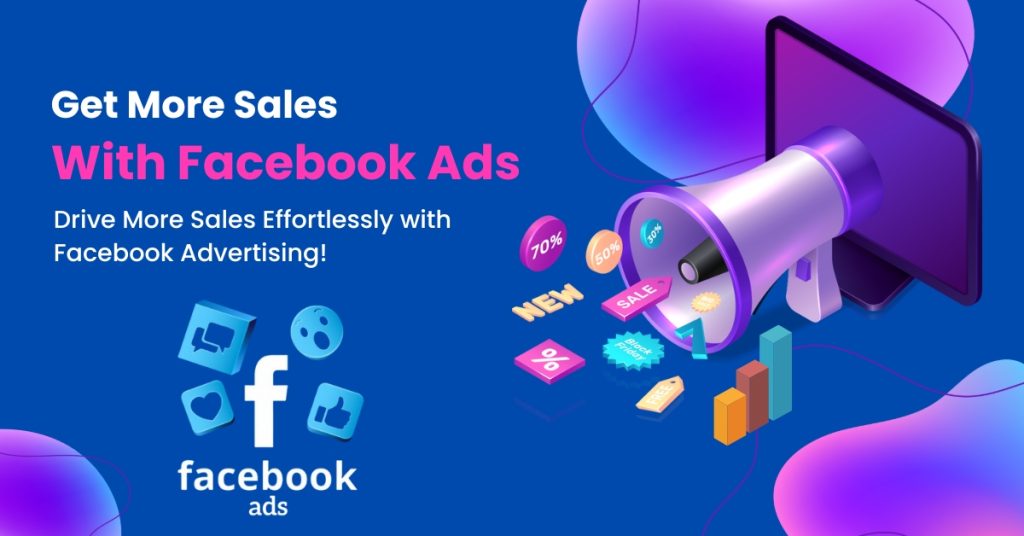In the ever-evolving world of digital marketing, Facebook ads have become a cornerstone for businesses aiming to reach targeted audiences, generate leads, and boost sales. Whether you’re running a small business, an e-commerce store, or a large corporation, mastering Facebook ads can be the game-changer that sets you apart from competitors.
In this guide, we’ll walk through everything you need to know about facebook ads—what they are, how they work, best practices, and how to optimize them for maximum return on investment (ROI)
What Are Facebook Ads?
Facebook ads are paid messages from businesses that are displayed to a targeted audience on Facebook. These ads appear across the platform, including in the News Feed, Stories, Marketplace, and even on Instagram, Messenger, and the Audience Network.
Unlike organic posts, These ads help businesses grow allow businesses to pay for visibility and directly reach specific user groups based on demographics, interests, behaviors, location, and more

Why Use Facebook Ads?
With over 2.9 billion monthly active users, Facebook offers one of the largest and most diverse audiences in the world. Here’s why Facebook ads are a must for any business:
- 🎯 Advanced Targeting Options: Facebook provides detailed targeting filters, allowing you to segment your audience with laser precision.
- 💰 Budget Flexibility: Start with as little as $1 per day and scale as needed.
- 📊 Real-Time Analytics: Measure impressions, clicks, conversions, and more in real
- 📱 Cross-Platform Reach: Your Facebook ads also appear on Instagram and Messenger.
Types of Facebook Ads
Facebook offers multiple ad formats to suit different marketing goals. Choosing the right type of ad is crucial for success. Here are the most common ones:
1. Image Ads
Simple, clean, and effective. Use high-quality images to grab attention in the feed.
2. Video Ads
Perfect for storytelling and product demonstrations. Video ads usually have higher engagement.
3. Carousel Ads
Display up to 10 images or videos in a single ad—ideal for showcasing multiple products.
4. Collection Ads
An e-commerce-friendly format that allows users to browse a collection of products within the ad.
5. Lead Generation Ads
Designed to collect customer information like emails and phone numbers directly within Facebook.
Each of these ad formats can be tailored to match specific objectives, whether it’s brand awareness, traffic, lead generation, or direct sales.
Setting Up Facebook Ads (Step-by-Step)
Creating these ads may seem overwhelming at first, but the process is straightforward once you understand the flow. Here’s how to set up your first campaign:
Step 1: Set Up Business Manager
Start by creating a Facebook Business Manager account. Link your business page and ad account to manage campaigns efficiently.
Step 2: Define Your Goal
Choose your campaign objective—Awareness, Consideration, or Conversion. The objective determines how Facebook optimizes your Facebook ads.
Step 3: Target Your Audience
Use Facebook’s targeting tools to select location, age, gender, language, interests, and behaviors. You can also create custom and lookalike audiences.
Step 4: Set Your Budget
Choose between a daily or lifetime budget. Monitor performance regularly to adjust as needed.
Step 5: Design Your Ad
Use eye-catching visuals and compelling ad copy. Keep your call to action (CTA) clear and persuasive.
Step 6: Monitor and Optimize
Track key metrics like CTR (click-through rate), CPM (cost per thousand impressions), and ROAS (return on ad spend). Use A/B testing to improve performance over time.
Tips for Running Successful Facebook Ads
✅ Use High-Quality Visuals
People scroll fast—your FB ads need to stand out instantly. Use bright colors, professional photos, and short engaging videos.
✅ Write Compelling Copy
Good copy should be clear, concise, and conversion-focused. Address the audience’s pain points and offer solutions.
✅ Strong Call-to-Actions
Tell your audience what you want them to do: “Shop Now,” “Learn More,” or “Get Started.”
✅ A/B Testing
Always test different versions of your fb ads to see what works best. Change headlines, visuals, and CTAs.
✅ Retargeting Campaigns
Retarget users who interacted with your website, Instagram, or previous ads. Retargeted this ads typically have higher conversion rates.
Common Mistakes to Avoid
Even experienced marketers make mistakes. Here are a few common pitfalls to avoid when running Meta Ads:
- ❌ Targeting too broad or too narrow
- ❌ Not using the Facebook Pixel
- ❌ Poor-quality visuals
- ❌ Ignoring mobile optimization
- ❌ Not tracking or analyzing performance
Each mistake can cost you money and reduce the effectiveness of your Facebook ads.
Facebook Ads vs. Boosted Posts
It’s important to note that Facebook ads are not the same as boosted posts.
- Boosted posts are simplified ads created from existing posts.
- Facebook Ads (via Ads Manager) offer advanced options like A/B testing, custom placements, and in-depth targeting.
For serious marketers, using Ads Manager to create Facebook ads is the best approach.
How Much Do Facebook Ads Cost?
There is no fixed cost for Facebook ads. The platform uses an auction system, and pricing depends on:
- Audience size and competition
- Ad quality and relevance score
- Bidding strategy
- Time of year (costs rise during holidays)
On average, CPC (Cost Per Click) ranges between $0.50 to $2.00 depending on the niche and audience.
Conclusion
In today’s digital economy, Facebook ads are no longer optional—they are essential. With the right strategy, Facebook ads can help you grow your brand, increase traffic, and convert leads into loyal customers.
Whether you’re just starting out or looking to optimize existing campaigns, now is the time to invest in Meta ads. Keep testing, learning, and adapting. Because in the world of social media advertising, those who experiment and evolve always stay ahead.
👉 Ready to Launch Profitable Facebook Ads?
If you’re looking for expert help with campaign setup, targeting, creatives, and analytics, let’s connect! I help businesses generate results through high-performing meta ads that convert.
